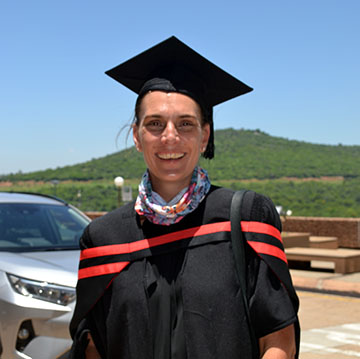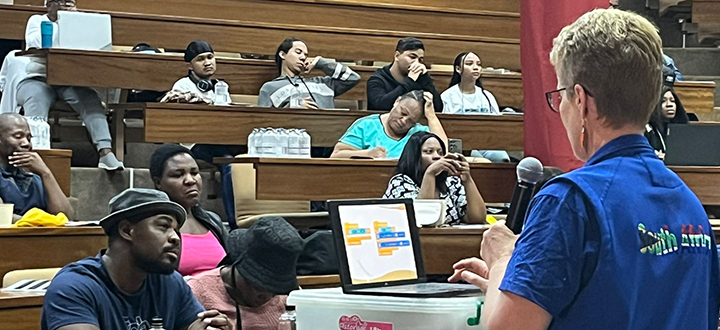News & Events
Unisa empowers educators with practical coding and robotics skills
The Unisa Science Engagement Centre (USEC) hosted an educators’ practical robotics workshop from 8 to 10 January 2025 at the Unisa Science Campus in Florida.
The workshop attracted more than 600 educators (in-person, online, and also at the Science Centres in Limpopo (Rixile Science Centre), Mpumalanga (TechnoAfrica) and KwaZulu-Natal (University of KwaZulu-Natal and the Christoph Meyer Science Centre).

Educators from various schools who attended the sessions at the Unisa Science Campus
Educators had three days to engage in impactful robotics activities and networking aimed at equipping them with the knowledge and skills to integrate robotics and coding into their teaching in 2025.The three-day event included a mix of exhibitions, competitions and activities.
Day 1 of the workshop started with an introduction and welcoming session where the significance of robotics in enhancing education were emphasised in a presentation by Risuna Maluleke from the Department of Higher Education and Training. She also highlighted career paths for educators and learners interested in robotics. To promote creativity and teamwork, educators started the hands-on activities by creating robots and adding passive attachments. The afternoon was dedicated to programming the robots and resolving practical challenges. Educators were able to learn a great deal about the logic and mechanics of robotics during this session, which equipped them to help their students with similar tasks.
On day 2, various South African robotics competitions were introduced. The Virtual GEAR and the Submerged theme of FIRST Lego League were used as training materials. Grade R–3 educators ‘participated’ in an Explore competition, and demonstrated their creativity and teamwork by showcasing robotic solutions.Grade 4–12 educators ‘participated’ in the Challenge competition that showcased the advanced technical abilities of older learners with challenging programming and problem-solving constructs, and programming robots to solve practical issues. The competitions provided an exciting platform for educators to observe the potential of robotics in fostering problem-solving, critical thinking and collaboration among learners.

Enthusiastic educators and their robots
On the last day, the practical sessions were designed to examine career opportunities and advanced applications in robotics. Through the USEC and Environmental Sciences Massive Open Online Course (MOOC) and the Build the Change programme, educators could explore further promotional opportunities of robotics and coding. The Build the Change practical was an interactive exercise in which educators applied what they had learnt by creating answers to real-world issues.

Dr Patricia Gouws from USEC facilitating the basic skills of programming
The three days of the 2025 USEC Practical Robotics workshop offered educators a platform to improve their robotics skills. The event gave educators the networking opportunities and access to the tools needed to inspire and mentor the upcoming generation of innovators and problem-solvers.
* By Marina Mayingi, Unisa Science Engagement Centre intern
Publish date: 2025/01/22
